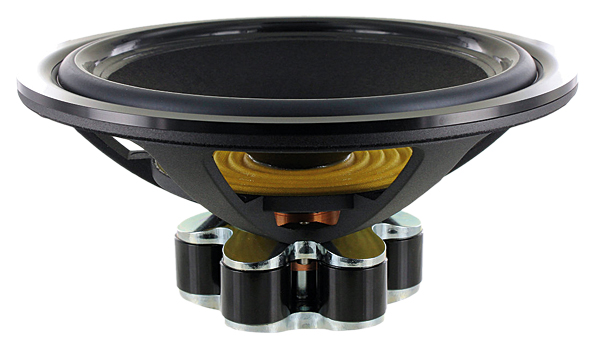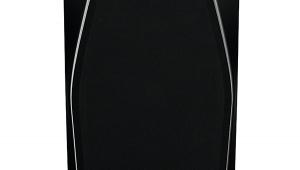Living Voice R80 Loudspeaker Elliptical Drivers
Elliptical drivers? Not quite... Look closely at our pictures of the R80 and while the mid/bass unit's dust cap and two-layer voice coil are clearly elliptical in shape, the pulp cone is very traditionally circular. Ironically, the true elliptical drivers of hi-fi history – such as that seen in B&W's DM3 from 1968 – combined oval cones with traditional circular/cylindrical caps, formers and coils. Scan-Speak freely admits that the idea of using an elliptical driver coil to moderate break-up modes in a speaker cone was advanced almost as a throw-away remark by Scan-Speak's late senior engineer Birger Jørgensen.

Nevertheless, on closer examination, Scan-Speak's design team saw technical advantages not only in a bass/mid application but also for a tweeter where a larger dome could be employed for improved low-frequency extension, dispersion and sensitivity while avoiding the standing waves that occur in a symmetrical (circular) dome.
Realising these advantages presents very specific technical challenges, not least in the design of the 'motor' that is still required to bathe the elliptical voice coil in a uniform magnetic field. For this Scan-Speak leveraged the 'AirCirc' magnet system from its Illuminator series, modified here into an array of ten cylindrical neodymium magnets surrounding the 28x39mm voice coil of the tweeter. For the 210mm 'midwoofer' employed in the R80 [inset picture], Scan-Speak uses six larger cylindrical magnets around the two-layer 35x45mm voice coil. In practice the cone exhibits a series of lower-level distributed modes rather than one or two debilitating resonances. Furthermore, the asymmetric nature of the resonances produces even- rather than odd-order harmonic distortions, another feature confirmed by our independent lab tests. PM

























































